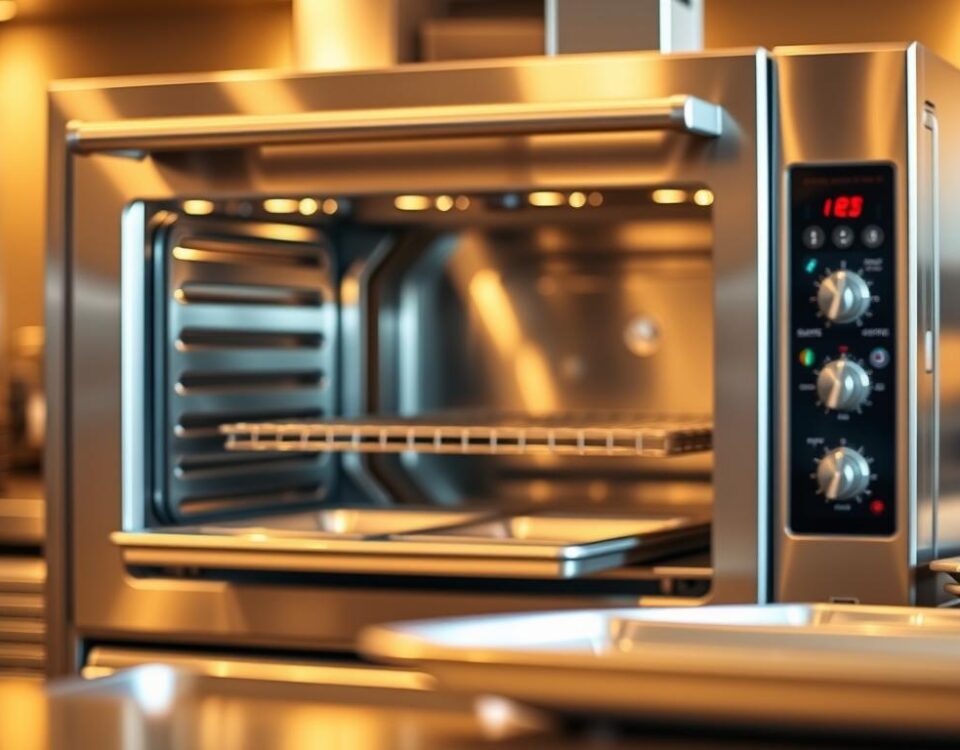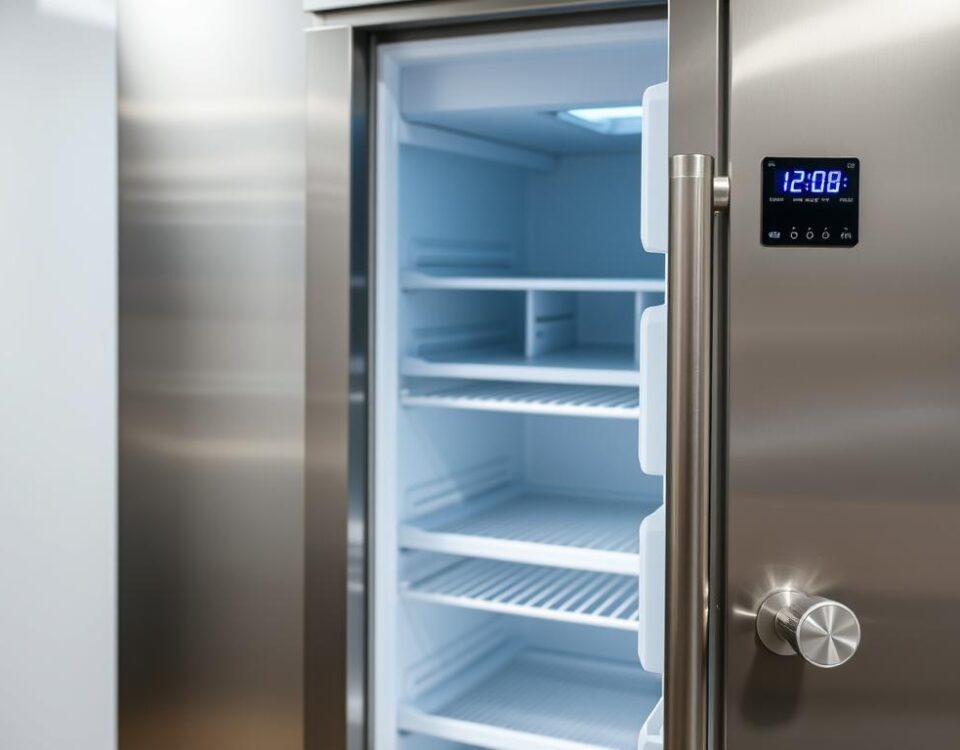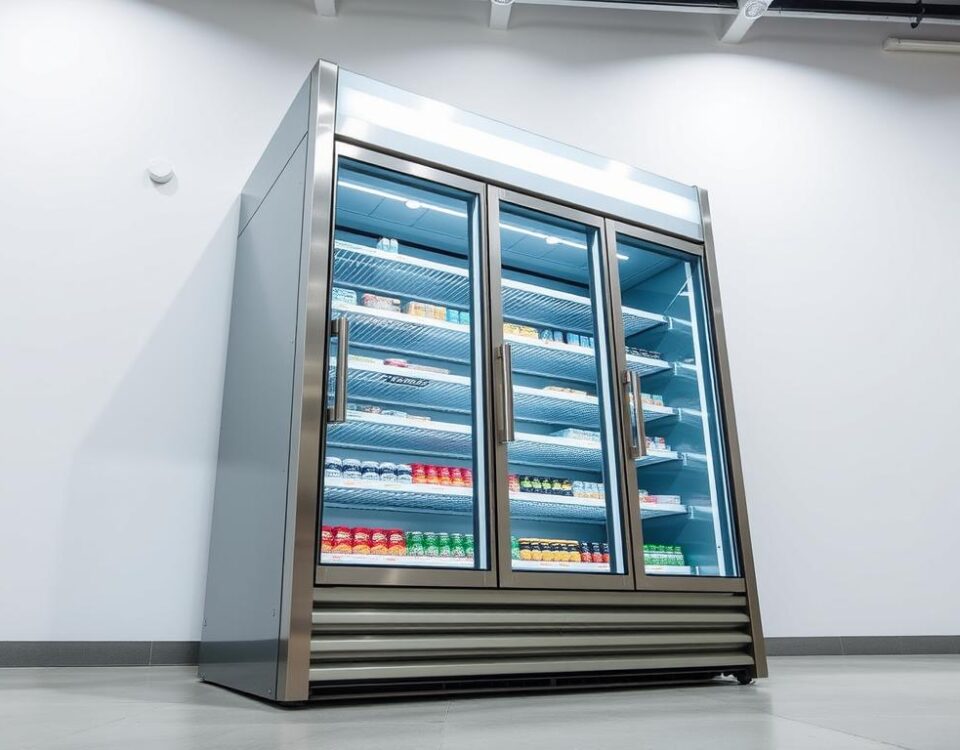
US Foods vs Sysco: 6 Hidden Cost Differences Restaurateurs Should Know
August 6, 2025
How AI-Driven Menu Engineering Boosts Restaurant Profits
August 7, 2025The food delivery landscape is changing rapidly, and ghost kitchens are at the forefront of this revolution. As a restaurateur, you might be wondering how to stay ahead in this competitive market. Consider this: the food delivery market is projected to grow by 11.4% annually through 2025, driven largely by the rise of ghost kitchens.
This shift isn’t just about convenience; it’s about adapting to changing consumer behaviors and leveraging technology to optimize operations. By examining five distinct ghost kitchen case studies, we’ll uncover the strategies that are driving success in this space and explore how you can apply these insights to your own business.
Key Takeaways
- The evolution of ghost kitchens from pandemic solutions to industry mainstays.
- Key factors that differentiate thriving ghost kitchens from struggling ones.
- How technology integration is crucial for ghost kitchen success.
- Actionable insights for restaurant operators considering ghost kitchen expansion.
- Trends in consumer behavior driving demand for ghost kitchens.
The Evolution of Ghost Kitchens: From Pandemic Solution to Industry Staple
The rise of ghost kitchens marks a significant shift in the restaurant industry’s operational landscape. Since the introduction of drive-ins in the 1930s, the $900B US restaurant industry has experienced major operational transformations about every 30 years.
The Market Transformation Since 2020
The COVID-19 pandemic accelerated the adoption of ghost kitchens, driven by the need for contactless food delivery. As a result, ghost kitchens have become a staple in the industry, with many restaurants adopting this model to stay competitive. The market transformation has been significant, with ghost kitchens now playing a crucial role in the food delivery ecosystem.
Key Factors Driving Ghost Kitchen Success in 2025
Several factors contribute to the success of ghost kitchens in 2025, including technological integration, optimized physical spaces, and adapted consumer offerings. The use of data analytics and strategic brand development also play a crucial role in driving decision-making and customer engagement. By leveraging these factors, ghost kitchens can maximize efficiency, output, and customer satisfaction.
Case Study #1: Coffee Q – Blending Unique Concepts Under One Roof
Coffee Q’s unique blend of concepts under one roof has made it a standout in the ghost kitchen industry. This innovative approach has enabled the company to cater to a diverse range of customers, increasing its market share and driving growth.
Business Model and Origin Story
Coffee Q’s business model is built around the concept of a shared kitchen space, where multiple brands operate under one roof. This approach allows for reduced overhead costs and increased efficiency. The company’s origin story is rooted in its founders’ passion for food and innovation.
Implementation of the Dark Kitchen Model
The implementation of the dark kitchen model has been a key factor in Coffee Q’s success. By focusing on delivery-only operations, the company has been able to optimize its menu offerings and streamline its production process. 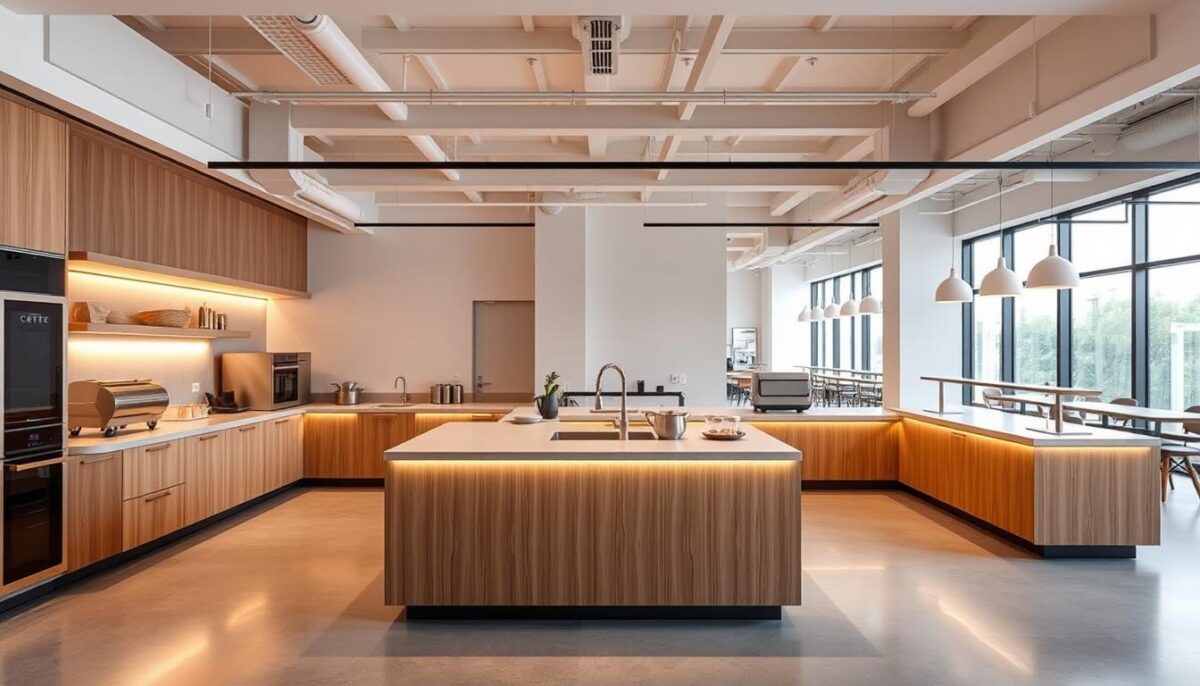
Key Success Metrics and Customer Acquisition Strategy
Coffee Q’s success can be measured by its significant growth in order volume and revenue. The company’s customer acquisition strategy involves a multi-channel approach, including digital marketing and delivery platform optimization.
| Key Metrics | Performance |
|---|---|
| Order Volume Growth | 25% increase |
| Revenue Growth | 30% increase |
| Customer Retention Rate | 75% |
According to Julio, a partner of Coffee Q, “We’re learning how to become experts and masters at delivery. CloudKitchens has created a new market for me that wasn’t there before.” This sentiment is reflected in Coffee Q’s data-driven approach to customer satisfaction, which has enabled the company to refine its menu offerings and improve its overall customer experience.
Case Study #2: Crave – Multi-Brand Ghost Kitchen Ecosystem
Crave’s innovative approach to ghost kitchens has revolutionized the food delivery landscape. By leveraging first-of-its-kind technology, Crave aggregated top brands into their first facility, which opened in November 2020 and quickly scaled to $500,000 in monthly revenue within six months.
Technology Infrastructure and Scalability
Crave’s success can be attributed to its robust technology infrastructure, enabling seamless scalability. This infrastructure supported the rapid growth of their ghost kitchen, facilitating efficient food delivery and order management systems.
The “Amazon” Approach to Food Ordering
Crave adopted an “Amazon” approach to food ordering, creating a multi-brand ecosystem that allows customers to order from various restaurant brands in one go. This approach enhanced customer experience and increased revenue streams.
Revenue Growth and Investment Outcomes
Crave’s ghost kitchen model achieved significant revenue growth, reaching $500,000 in monthly revenue within six months. This success attracted $16 million in investment capital, which was utilized to scale their operations and license their technology to other major brands.
| Metric | Value |
|---|---|
| Monthly Revenue | $500,000 |
| Investment Capital | $16 million |
| Time to Scale | 6 months |
Case Study #3: Ghost Kitchen Collaborations That Thrive
By pooling resources, ghost kitchens are achieving unprecedented success through collaborations. This approach allows multiple brands to share the same kitchen space, reducing operational costs and increasing efficiency.
The Hive’s Collaborative Kitchen Model
The Hive’s model brings together multiple brands under one roof, leveraging shared resources to optimize kitchen operations. This collaborative approach enables brands to focus on their core competencies while reducing overhead costs.
Dickey’s Barbecue Pit’s Virtual Brand Strategy
Dickey’s Barbecue Pit, led by CEO Laura Dickey and VP of Franchise Development Dennis Ju, has successfully implemented a virtual brand strategy. By launching virtual brands, they’ve expanded their customer base without increasing their physical footprint.
Operational Efficiencies and Cost Savings
Collaborative ghost kitchens achieve significant operational efficiencies and cost savings by sharing labor, equipment, and delivery resources. This model also enables better inventory management and reduced capital expenditure requirements. According to industry experts, these collaborations can reduce costs by up to 30% compared to traditional restaurant operations.
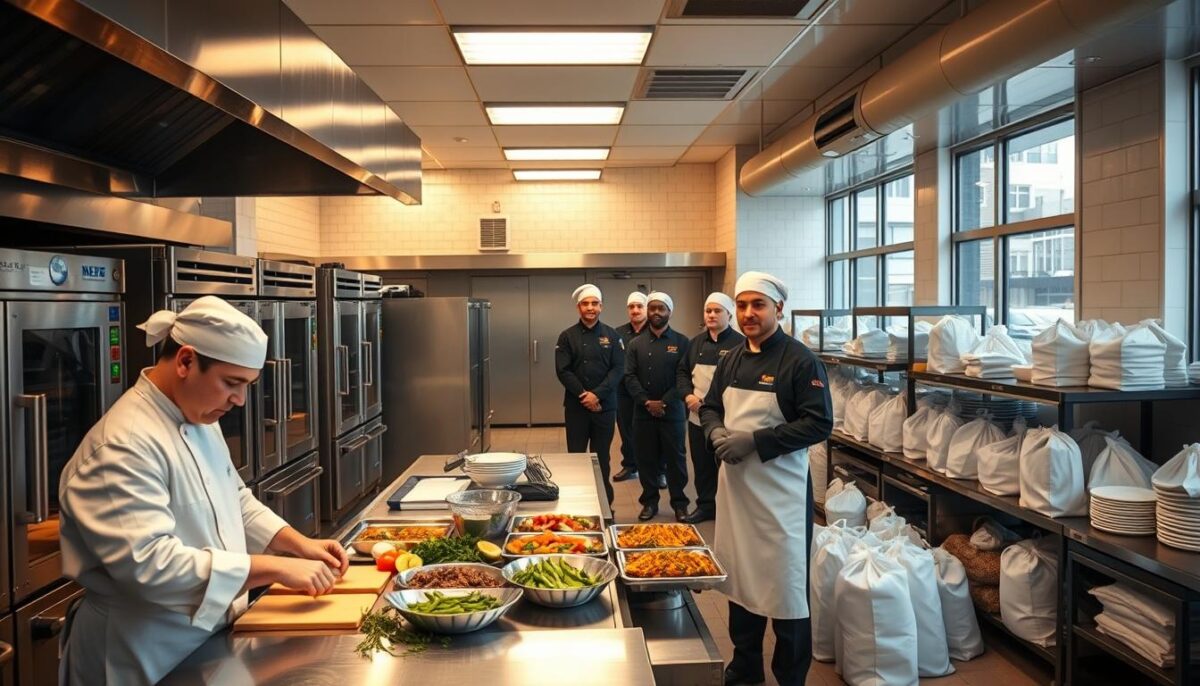
Lessons Learned: What Makes Ghost Kitchens Successful in 2025
As we explore the world of ghost kitchens in 2025, it’s clear that success depends on a combination of key factors. The most successful ghost kitchens have adapted to the evolving landscape by focusing on critical areas that drive their prosperity.
Technology Integration as a Competitive Advantage
Technology plays a vital role in the success of ghost kitchens. By leveraging advanced kitchen management systems, ghost kitchens can streamline their operations, improve order accuracy, and enhance customer satisfaction. For instance, integrating technology enables ghost kitchens to optimize their order fulfillment processes, reducing wait times and increasing efficiency.
| Technology | Benefits |
|---|---|
| Kitchen Management Systems | Streamlined operations, improved order accuracy |
| Online Ordering Integration | Increased efficiency, reduced wait times |
Optimizing Labor and Space Efficiency
Optimizing labor and space is crucial for ghost kitchens to maintain profitability. By implementing efficient staffing models and utilizing data-driven insights, ghost kitchens can minimize labor costs while maximizing output. Additionally, clever use of storage and kitchen layout can significantly enhance space efficiency, allowing for more simultaneous food preparation.
Building Virtual Brands That Connect With Customers
Creating compelling virtual brand identities is essential for ghost kitchens to resonate with customers. This involves developing a strong online presence through social media, engaging website design, and consistent branding. Ghost kitchens can also leverage influencer partnerships and user-generated content to build brand awareness and credibility. By focusing on storytelling and brand narratives, ghost kitchens can create emotional connections with their customers.
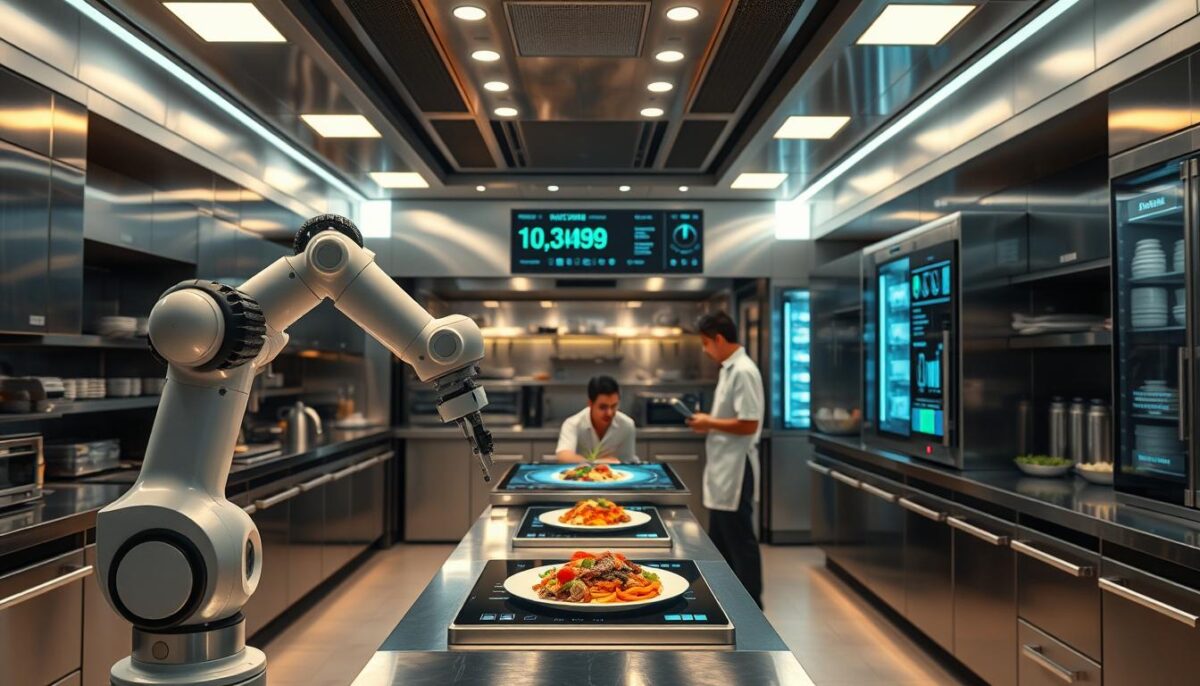
Conclusion: The Future of Ghost Kitchens Beyond 2025
Beyond 2025, ghost kitchens will continue to evolve, shaped by the lessons learned from today’s successful models. The industry is expected to be driven by further technological integration and automation, enhancing efficiency and customer experience. As consumer expectations shift, ghost kitchens will need to adapt, potentially leading to hybrid models that combine the benefits of traditional brick-and-mortar restaurants with the flexibility of virtual brands.
Successful ghost kitchen operators are already positioning themselves for future developments through strategic investments and partnerships. To succeed in this rapidly evolving sector, restaurant operators and entrepreneurs must focus on building strong virtual brands and optimizing labor and space efficiency. By doing so, they can capitalize on the growing demand for food delivery and stay ahead in the competitive ghost kitchen landscape.
FAQ
What is the primary advantage of adopting a ghost kitchen model for my restaurant business?
The primary advantage is the ability to reduce costs associated with traditional brick-and-mortar restaurants, such as dine-in space and labor, allowing you to focus on food delivery and revenue growth.
How do ghost kitchens handle food storage and inventory management?
Ghost kitchens often utilize efficient storage systems and inventory management software to minimize waste and optimize their supply chain, ensuring that ingredients are fresh and readily available.
Can ghost kitchens support multiple virtual brands under one roof?
Yes, many ghost kitchens are designed to accommodate multiple virtual brands, enabling operators to cater to diverse customer preferences and increase average order value through strategic brand diversification.
What role does technology play in the success of ghost kitchens?
Technology is crucial in ghost kitchens, as it enables seamless online ordering, efficient order management, and data-driven insights to inform business decisions and drive customer engagement.
How do ghost kitchens ensure customer satisfaction and loyalty?
Ghost kitchens focus on delivering high-quality food, timely delivery, and excellent customer service through various channels, including social media and online review platforms, to build strong brand loyalty and retention.
What are the key factors driving the popularity of ghost kitchens in the market?
The rising demand for food delivery, coupled with the need for restaurants to adapt to changing consumer behaviors and preferences, has driven the growth of ghost kitchens as a viable business model.
How can I measure the success of my ghost kitchen operation?
Key performance indicators such as revenue growth, customer acquisition costs, order volume, and labor efficiency can help you evaluate the success of your ghost kitchen and identify areas for improvement.

